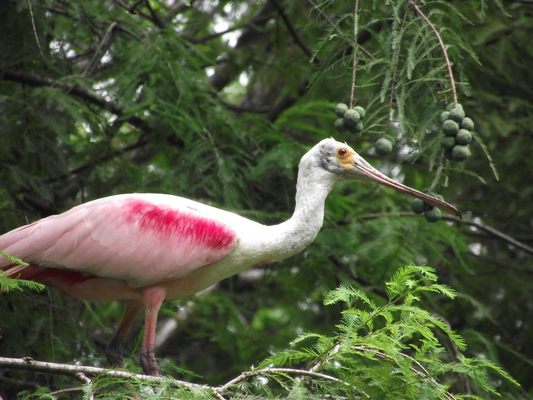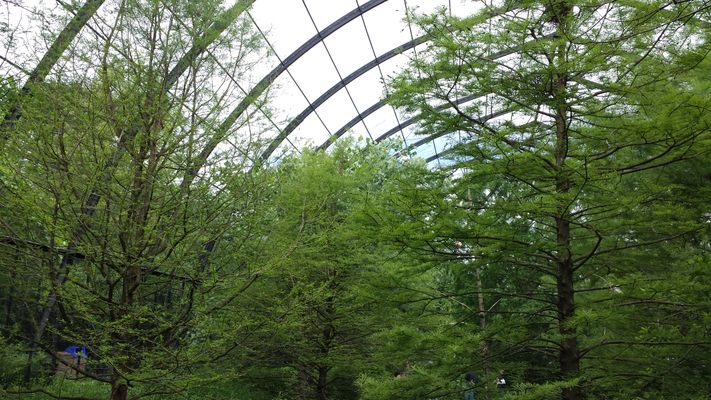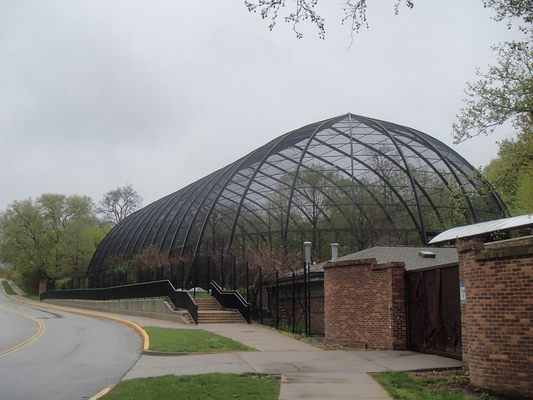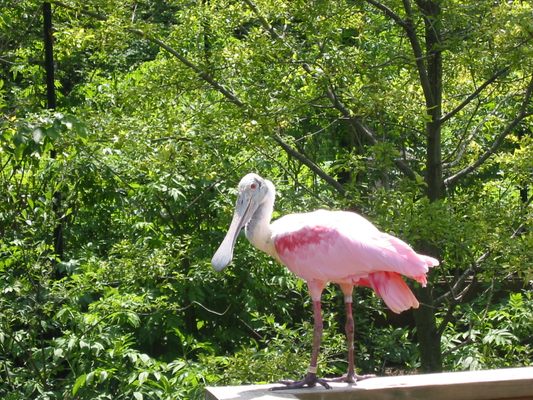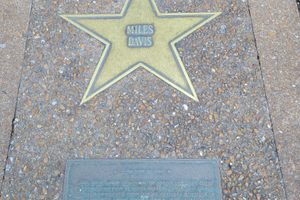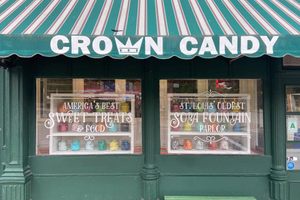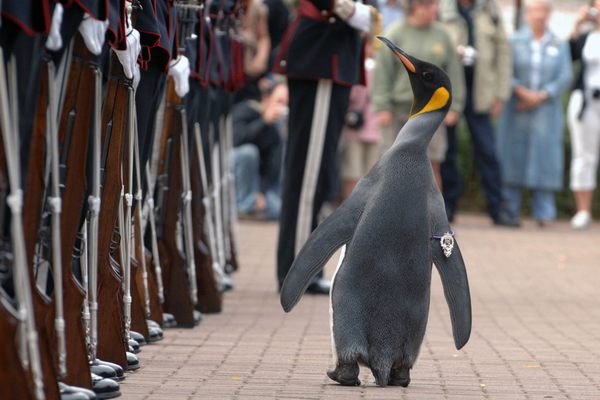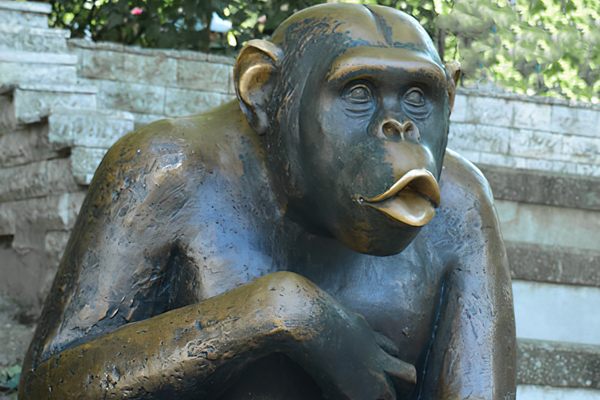About
When the St. Louis 1904 flight cage was built for the world's fair that same year, it was the largest flight cage ever constructed, and it remains one of the largest free flight cages in the world today.
While strolling along the winding paths that weave through the exhibit, you’ll be transported to a lush, verdant ecosystem. Expect to find ducks, herons, and snowy egrets swimming and wading within the swampy waters. Or, look up and see if you can spot the delightfully pink plumage of a roseate spoonbill perched within the trees.
The flight cage that houses this menagerie of birds was supposed to just be a temporary exhibit, meant to be disassembled and transported to Washington, D.C. for the next fair. But St. Louis liked the massive enclosure so much it decided to keep it for itself.
The city paid $3,500 for the cage (which was built for $17,500) and, because the cheap price didn’t include any avian add-ons, the city also bought a pair of Mandarin ducks for $7.50 and four Canadian geese for $20. A few generous locals also donated their owls.
The flight cage remained its own attraction until the formal establishment of the St. Louis Zoo in 1916, the first municipally supported zoo in the world. Since the city originally purchased the enclosure the number and variety of species housed there has dramatically increased. The flight cage now hosts over 20 species of birds and is open year-round.
Designed by Frank Baker, the giant cage stands at 50 feet high, 84 feet wide, and 228 feet long. It was originally split into two lengthwise sections, with a central fenced-in tunnel that let visitors pass through. The structure was restored in 1967 and 1996, and the interior was revamped in 2010, modeled after the swamps commonly found in Missouri and Illinois.
Related Tags
Community Contributors
Added By
Published
October 6, 2017

